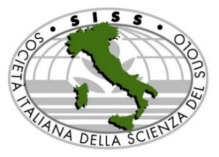Experimental study on optimization of chemical oxygen demand reduction through advanced oxidation process for refinery-based oily sludge in Barmer Rajasthan, India
DOI:
https://doi.org/10.6092/issn.2281-4485/20955Keywords:
Oily sludge, refinery waste, COD reduction, advanced oxidation processesAbstract
This study investigates the optimization of chemical oxygen demand (COD) reduction in oil refinery sludge using advanced oxidation processes (AOPs), addressing the pressing need for effective and sustainable wastewater treatment technologies. AOPs, known for their capacity to degrade complex organic pollutants, are explored under varying operational parameters, including pH, hydrogen peroxide (H₂O₂) dosage, ferrous sulfate (FeSO₄) concentration, and stirring time. The methodology involves controlled batch experiments to evaluate the individual and combined effects of these parameters on COD reduction efficiency. The study demonstrates that acidic conditions (pH 1.5) and an optimized H₂O₂ dosage of 100 ml/L achieves a maximum COD reduction of 57%. Stirring time is found to significantly influence the treatment process, with 90 minutes of stirring under optimal conditions yielding the best results. The inclusion of FeSO₄ as a catalyst provides limited enhancement, highlighting the need for further exploration of its role. The research identifies diminishing returns at higher reagent concentrations, emphasizing the importance of parameter optimization to balance efficacy and cost. The study is perhaps the first one of its kinds carried out in the western Rajasthan where a new petroleum refinery in Barmer district is getting ready for its operation very soon. The findings reveal that AOPs can effectively reduce COD in wastewater when operated under specific conditions, offering a sustainable approach for pollution control. Future work should focus on scaling the process for industrial applications, understanding the by-products formed, and investigating synergistic effects of catalysts to enhance performance. This research contributes to advancing wastewater treatment practices in line with global sustainability goals.
References
ABBASI M., DEHGHANI M., MOUSSAVI G., & AZHDARPOOR A. (2015) Degradation of organic matter of municipal sewage sludge using ultrasound treatment in shiraz wastewater treatment plant. Health Scope, 4(1). https://doi.org/10.17795/jhealthscope-23507
ABBASSI B., LIVINGSTONE T. (2019). A comparative review and multi-criteria analysis of petroleum refinery wastewater treatment technologies. Environmental Research Engineering and Management, 74(4). https://doi.org/10.5755/j01.erem.74.4.21428
AJAO A., YAKUBU S., UMOH V., & AMEH J. (2013). Bioremediation of refinery wastewater using immobilisedburkholderiacepacia and corynebacteriumsp and their transconjugants. Journal of Xenobiotics, 3(1), 4. https://doi.org/10.4081/xeno.2013.e4
AKINTAYO C., AREMU O., IGBOAMA W., NELANA S., AYANDA O. (2021). Performance evaluation of ultra-violet light and iron oxide nanoparticles for the treatment of synthetic petroleum wastewater: kinetics of COD removal. Materials, 14(17):5012. https://doi.org/10.3390/ma14175012
APPIA F., OUATTRA N. (2023) Degradation of pharma-ceuticals from simulated and real hospital wastewater apply-ing conventional Fenton process: optimization conditions and application. https://doi.org/10.21203/rs.3.rs-290549 7/v1
AWALUDDIN A., SONIA O., LINGGAWATI A., SIREGAR S. (2021) Preliminary study on COD removal on the treatment of palm oil mill effluent (pome) using birnessite-type manganese oxide via a solvent-free method..https://doi.org/10.2991/assehr.k.210305.023
BAUTISTA P., MOHEDANO A., CASAS J., ZAZO J., RODRÍGUEZ J. (2008) An overview of the application of fenton oxidation to industrial wastewaters treatment. Journal of Chemical Technology & Biotechnology, 83(10): 1323-1338. https://doi.org/10.1002/jctb.1988
BIEŃ B., BIEŃ J. (2022). Analysis of reject water formed in the mechanical dewatering process of digested sludge conditioned by physical and chemical methods. Energies, 15(5):1678. https://doi.org/10.3390/en15051678
COSTAMAGNA P., ROSELLINI S., LAVARONE A., SCARSI G., SATURNO E., & MANTELLI V. (2021) Experimental study of a reverse osmosis pilot plant for reuse of refinery wastewater. Journal of Chemical Technology and Biotechnology, 96(10):2852-2864. https://doi.org/10.1002/jctb.6836
CUI K., SHENG X., MENG Q., SHANG G., GUO K. (2023) Effects of bioaugmentation on the performance of industrial-scale activated sludge sequencing batch reactor under load shock of heavy oil refinery wastewater. IOP Conference Series Earth and Environmental Science, 1135(1):012023. https://doi.org/10.1088/1755-1315/1135 /1/ 012023
CUI K., XU Q., SHENG X., MENG Q., SHANG G., MA Y., GUO K. (2021) The impact of bioaugmentation on the performance and microbial community dynamics of an industrial-scale activated sludge sequencing batch reactor under various loading shocks of heavy oil refinery wastewater. Water, 13(20):2822. https://doi.org/10.3390/w13202822
DAWCZAK P., DUDZIAK M. (2020) Treatment of wastewater from the foundry industry using fenton process. Architecture Civil Engineering Environment, 13(1):115-120. https://doi.org/10.21307/acee-2020-009
EMOYAN O., AKPORHONOR E., AKPOBORIE I. (2008) Environmental risk assessment of river ljana, ekpan, delta state Nigeria. Chemical Speciation and Bioavailability, 20(1):23-32. https://doi.org/10.1080/09542299.2008.1107 3770
GASIM H., KUTTY S., ISA M., ALEMU L. (2013) Optimization of anaerobic treatment of petroleum refinery wastewater using artificial neural networks. Research Journal of Applied Sciences Engineering and Technology, 6(11):2077-2082. https://doi.org/10.19026/rjaset.6.3827
HAYDER G., MEGAT A., SHAMSUL R. (2014) Treatment of petroleum refinery wastewater using extended aeration activated sludge. International Journal of Engineering Research in Africa, 13:1-7.https://doi.org/10.4028/www.scientific.net/jera.13.1
HONG-YAN M., ZHANG M., SUN S., ZHANG S., LUO Y., ZHANG Z., JIANG Q. (2021) Pilot-scale airlift bioreactor with function-enhanced microbes for the reduction of refinery excess sludge. International Journal of Environmental Research and Public Health, 18(13):6742. https://doi.org/10.3390/ijerph18136742
INDIAN STANDARD 3025- Part 58 (2006) Methods of sampling and test (physical and chemical) for water and wastewater; chemical oxygen demand (COD) (RA 2017).
JAFARINEJAD S. (2019) Simulation for the performance and economic evaluation of conventional activated sludge process replacing by sequencing batch reactor technology in a petroleum refinery wastewater treatment plant. Chemengineering, 3(2):45. https://doi.org/10.3390/chemengineering3020045
JEREZ S., MARTÍN J., VENTURA M., PARIENTE M., SEGURA Y., PUYOL D., MARTÍNEZ F. (2023) Thermal hydrolysis of solid fraction reduces waste disposal and provides a substrate for anaerobic photobiological treatment of refinery wastewater. Environmental Science Water Research and Technology, 9(4):1108-1114. https://doi.org/10.1039/d2ew00263a
KNIGHT M. (2021) Assessing the performance of a UV/H2O2 process for removing toc from petroleum refinery wastewater and the respirometric effects of adding UV/H2O2 treated wastewater to activated sludge from the refinery wwtp biological treatment process.. https://doi.org/10.32920/ryerson.14644851
KULIĆ A., BEČELIĆ‐TOMIN M., KERKEZ Đ., MILIDRAG G., GVOIĆ V., PRICA M., DESIGN N. (2018) Examination of the application possibilities of waste red mud in treatment of colored effluent., 175-180. https://doi.org/10.24867/grid-2018-p21
PROROT A., ESKICIOGLU C., DROSTE R., DAGOT C., LEPRAT P. (2008) Assessment of physiological state of microorganisms in activated sludge with flow cytometry: application for monitoring sludge production minimization. Journal of Industrial Microbiology and Biotechnology, 35 (11):1261-1268.
https://doi.org/10.1007/s10295-008-0423-9
RIVAS J., BELTRÁN F., GIMENO O., FRADES J. (2001) Treatment of olive oil mill wastewater by fenton's reagent. Journal of Agricultural and Food Chemistry, 49(4): 1873-1880. https://doi.org/10.1021/jf001223b
SOLAK M. (2023) Application of classical fenton process and advanced photo electro fenton process for the degra-dation of cod from wood processing wastewater: a com-parative study. Sakarya University Journal of Science, 27(3): 512-522. https://doi.org/10.16984/saufenbilder.1173306
TONY M., BEDRI Z. (2014) Experimental design of photo-fenton reactions for the treatment of car wash wastewater effluents by response surface methodological analysis. Advances in Environmental Chemistry, 1-8. https://doi.org/10.1155/2014/958134
TRAPIDO M., KULIK N., GOI A., VERESSININA Y., MUNTER R. (2009) Fenton treatment efficacy for the purification of different kinds of wastewater. Water Science and Technology, 60(7): 1795-1801. https://doi.org/10.2166/wst.2009.585
VIGGI C., PRESTA E., BELLAGAMBA M., KAČIULIS S., BALIJEPALLI S., ZANAROLI G., AULENTA F. (2015). The “oil-spill snorkel”: an innovative bioelectro-chemical approach to accelerate hydrocarbons biodegra-dation in marine sediments. Frontiers in Microbiology, 6. https://doi.org/10.3389/fmicb.2015.00881
WANG J., ZHAO Q., JIN W., JING L. (2008) Mechanism on minimization of excess sludge in oxic-settling-anaerobic (osa) process. Frontiers of Environmental Science and Engineering in China, 2(1):36-43. https://doi.org/10.1007/s11783-008-0001-4
YIN Y., WANG J. (2016) Fermentative hydrogen production from waste sludge solubilized by low-pressure wet oxidation treatment. Energy and Fuels, 30(7):5878-5884. https://doi.org/10.1021/acs.energyfuels.6b01034
Downloads
Published
How to Cite
Issue
Section
License
Copyright (c) 2025 Rizwan Ul Haq, Hajari Singh, Mahendra Pratap Choudhary

This work is licensed under a Creative Commons Attribution 4.0 International License.









